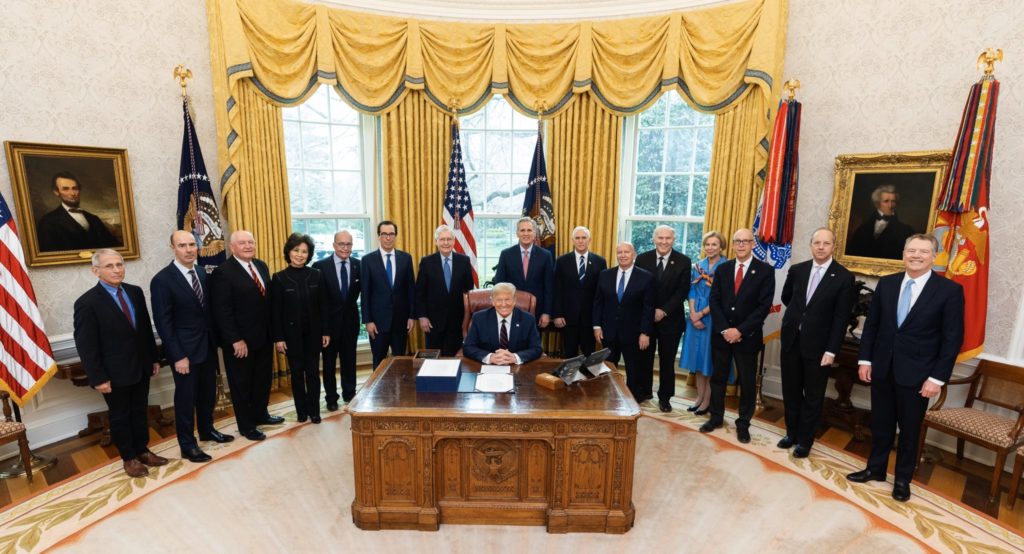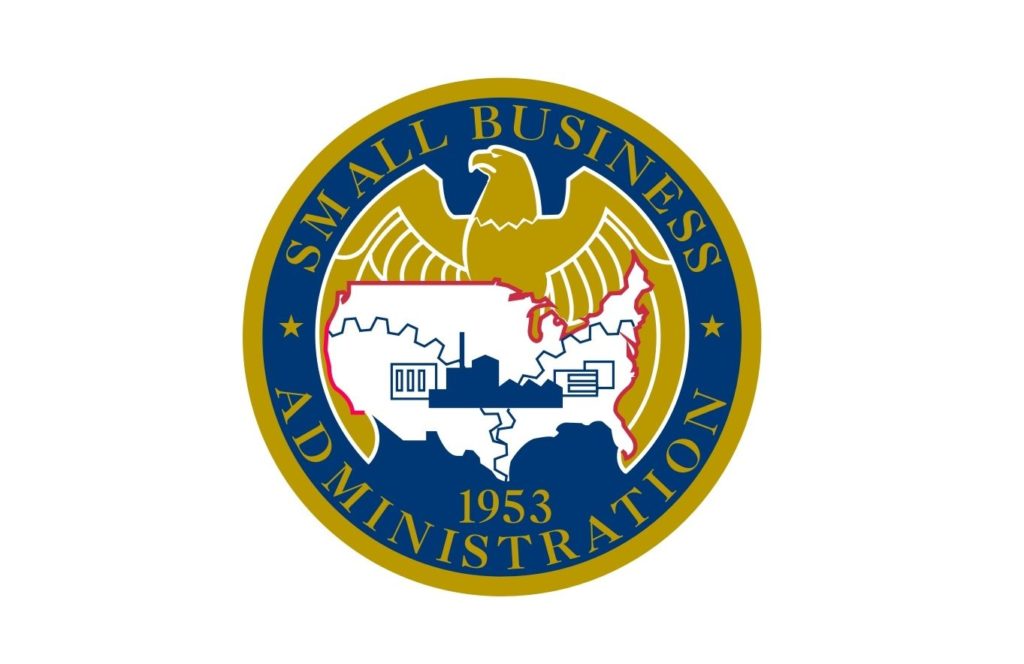
Senate approves House PPP tweaks; measure goes to Trump
By onAssociations | Business Practices | Legal | Market Trends
The Senate in a voice vote Wednesday approved a House bill containing Paycheck Protection Program loan changes sought by numerous business groups.
House Resolution 7010, the “Paycheck Protection Program Flexibility Act” already passed the House 417-1 on May 28.
U.S. Senate Majority Leader Mitch McConnell, R-Ky., credited U.S. Sen. Susan Collins, R-Maine, for having “helped strengthen and improve the House’s proposed PPP modifications before they passed the bill and sent it to us. And I know the senior Senator from Maine has already identified several more technical fixes for the new legislation that I hope Congress will address.”
The bicameral and bipartisan support would seem to make a veto by Republican President Donald Trump unlikely.
“The White House has not said whether Trump will sign the bill, but the president has indicated support for its goals,” the Washington Post reported Wednesday.
Small businesses can still apply for PPP loans. As of 5 p.m. Wednesday, 5,456 lenders had approved more than 4.5 million loans spanning nearly $510.6 billion altogether. The average loan was $113,465.
PPP status quo
The nearly $660 billion PPP initiative started by the CARES Act helped small businesses and employees weather the economic slump from the COVID-19 pandemic response by permitting cheap, loose and forgivable credit.
It involved 1 percent, two-year, SBA-guaranteed loans for up to about 2.5 months of payroll (capped at $10 million). Individual employee earnings above $100,000 don’t count as payroll.
The SBA has said loan principal and interest should be forgiven if the business spends 75 percent of the funds on payroll (which is also defined to include costs like benefits) and the rest on payroll, mortgage or other pre-existing debt interest, rent or utilities during the eight-week period immediately after the loan.
The business must also restore employee pay and full-time employee headcount to sufficient pre-pandemic levels by June 30.
Pay cuts of more than 25 percent remaining after that date reduce the proportion of the loan which will be forgiven, as do persisting decreases in full-time employees.
PPP loans became available April 3, which in theory means some of the early adopters would have exhausted their funds and be ready to pursue loan forgiveness.
New bill’s changes
On May 21, the Society of Collision Repair Specialists, the U.S. Chamber, and more than 130 other trade groups asked congressional leaders, Treasury Secretary Steven Mnuchin, and Small Business Administration Administrator Jovita Carranza for three changes to this format.
“The current rules made sense when the program was created, and it was anticipated that stay-at-home orders would last only a few weeks,” the groups wrote. “However, their implementation in the current environment is making it harder for small businesses to survive. Small businesses that close permanently will never be able to rehire their employees.”
The trade groups asked lawmakers and officials to end the “75%-25% rule,” let businesses spend the money over a longer period than the first eight weeks of the loan’s life and still have it forgiven, and “extend the June 30 safe harbor date for rehiring and restoration of pay.”
The PPP Flexibility Act delivers completely on two of these and meets the business groups part of the way on the third.
The bill gives small business PPP borrowers more than eight weeks to spend their loans and have all the debt forgiven.
Recipients would have 24 weeks or until Dec. 31, whichever comes first. They’d also have until Dec. 31 instead of June 30 to rehire employees and still be eligible for full debt forgiveness.
The CARES Act carried no mandates on which proportion of the funds had to be spent on payroll versus the other eligible expenses; the SBA established the “75%-25% rule” on its own prior to the first loans being issued.
“While the Act provides that borrowers are eligible for forgiveness in an amount equal to the sum of payroll costs and any payments of mortgage interest, rent, and utilities, the (SBA) Administrator has determined that the non-payroll portion of the forgivable loan amount should be limited to effectuate the core purpose of the statute and ensure finite program resources are devoted primarily to payroll,” the SBA interim final rule on the PPP states. “The Administrator has determined in consultation with the (Treasury) Secretary that 75 percent is an appropriate percentage in light of the Act’s overarching focus on keeping workers paid and employed. Further, the Administrator and the Secretary believe that applying this threshold to loan forgiveness is consistent with the structure of the Act, which provides a loan amount 75 percent of which is equivalent to eight weeks of payroll … Limiting non-payroll costs to 25 percent of the forgiveness amount will align these elements of the program, and will also help to ensure that the finite appropriations available for PPP loan forgiveness are directed toward payroll protection. SBA will issue additional guidance on loan forgiveness.
The unsuccessful HEROES Act — which contained many of the PPP Flexibility Act’s changes — would have let borrowers spend their money however they wished on the eligible categories and obtain forgiveness. But the PPP Flexibility Act ultimately mandated a 60-40 split.
“To receive loan forgiveness under this section, an eligible recipient shall use at least 60 percent of the covered loan amount for payroll costs, and may use up to 40 percent of such amount for any payment of interest on any covered mortgage obligation (which shall not include any prepayment of or payment of principal on a covered mortgage obligation), any payment on any covered rent obligation, or any covered utility payment,” H.R. 7010 states.
The bill echoes the SBA’s guidance that a business unable to rehire an employee during the time period won’t be penalized., and it gives a pass to employers who cut staff and have “an inability to hire similarly qualified employees for unfilled positions on or before December 31, 2020.”
It throws a bone to businesses who weren’t as busy as they were before the pandemic.
The PPP Flexibility Act will let job cuts slide if a company in good faith “is able to document an inability to return to the same level of business activity as such business was operating at before February 15, 2020, due to compliance with requirements established or guidance issued by the Secretary of Health and Human Services, the Director of the Centers for Disease Control and Prevention, or the Occupational Safety and Health Administration during the period beginning on March 1, 2020, and ending December 31, 2020, related to the maintenance of standards for sanitation, social distancing, or any other worker or customer safety requirement related to COVID–19.”
Even if a business finds itself unable to get part or all of the loan forgiven, they’ll have more time to pay off their low-interest debt.
The CARES Act permitted up to 10 years for the loans to mature; the SBA had settled on two years, explaining, “the considerable economic disruption caused by the coronavirus is expected to abate well before the two year maturity date such that borrowers will be able to re-commence business operations and pay off any outstanding balances on their PPP loans.” Thursday’s measure overrides this and increases the minimum maturity of the loan to five years.
The new bill also allows borrowers to defer payments “including payment of principal, interest, and fees, until the date on which the amount of forgiveness … is remitted to the lender.” The CARES Act had set overall deferral to between six months to a year; the SBA chose to make it six months.
Be heard: The White House can be reached here.
More information:
Small Business Administration Paycheck Protection Program webpage (Note: Some information will change if PPP Flexibility Act becomes law!)
Images:
U.S. Sen. Susan Collins, R-Maine, is shown. (Provided by Collins’ Office)
Republican President Donald Trump on March 27, 2020, signed the CARES Act. (Provided by Trump)
The Small Business Administration seal is shown. (Provided by U.S. government)


